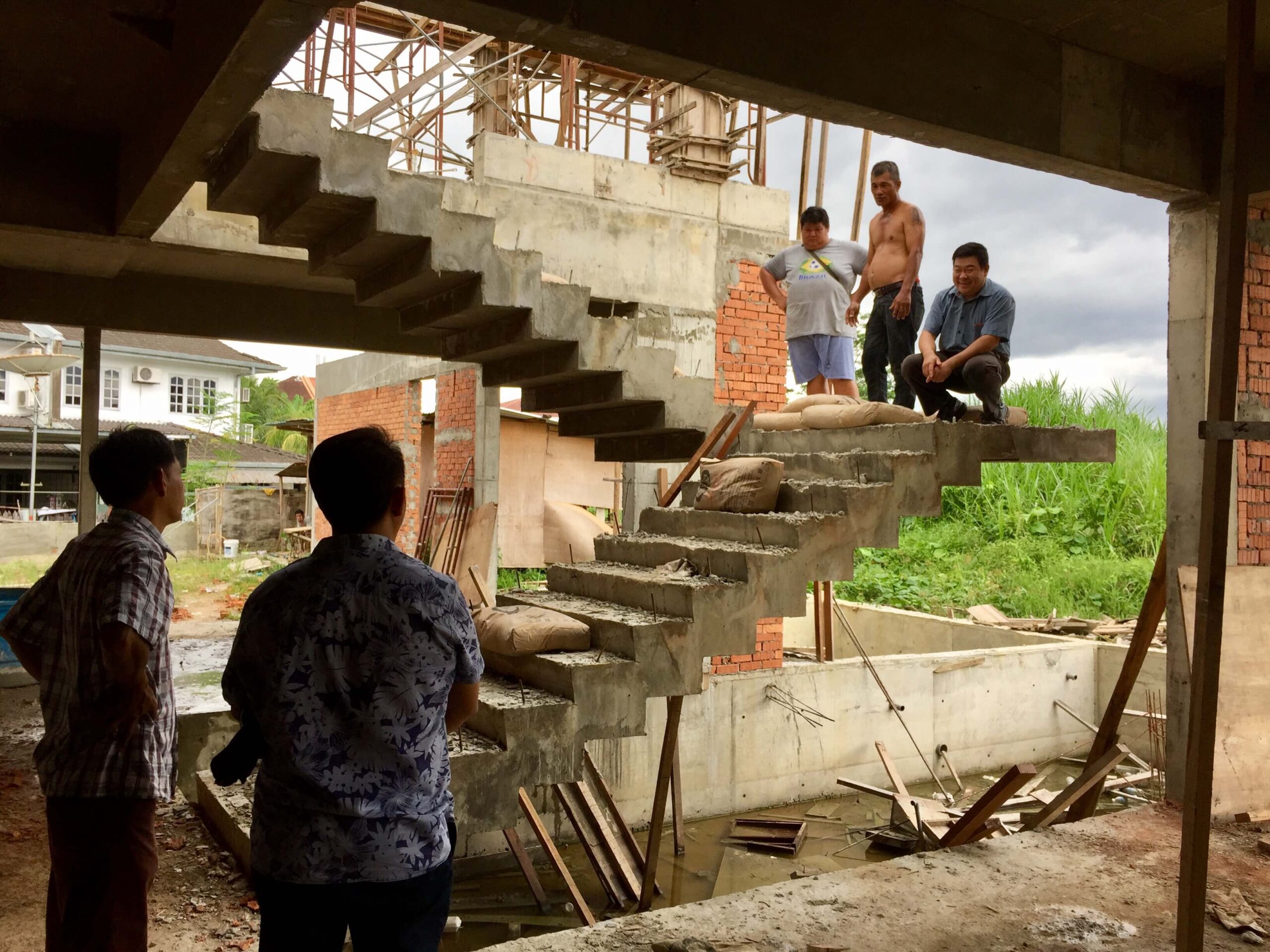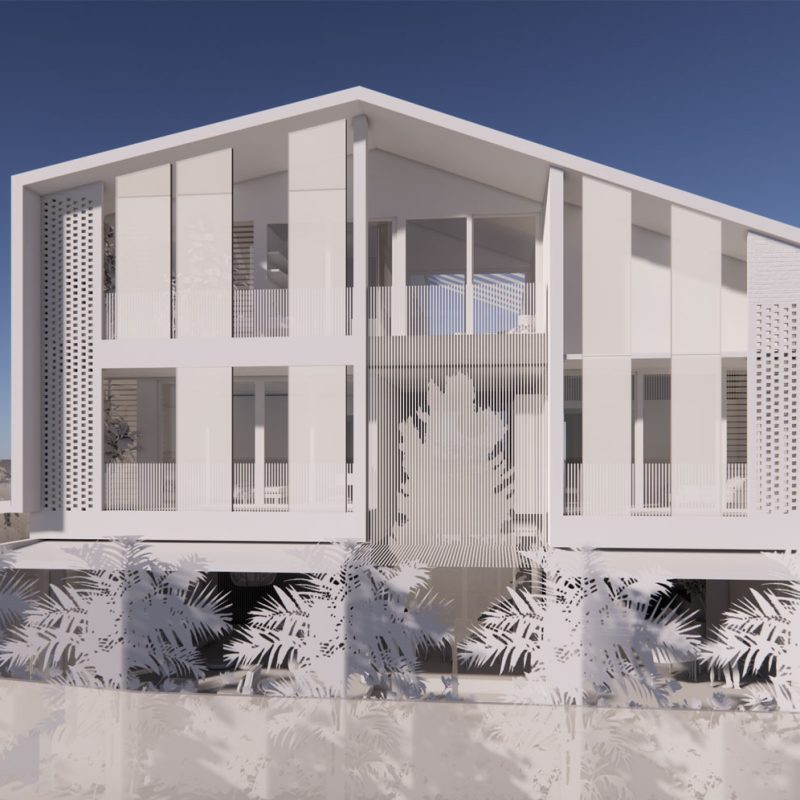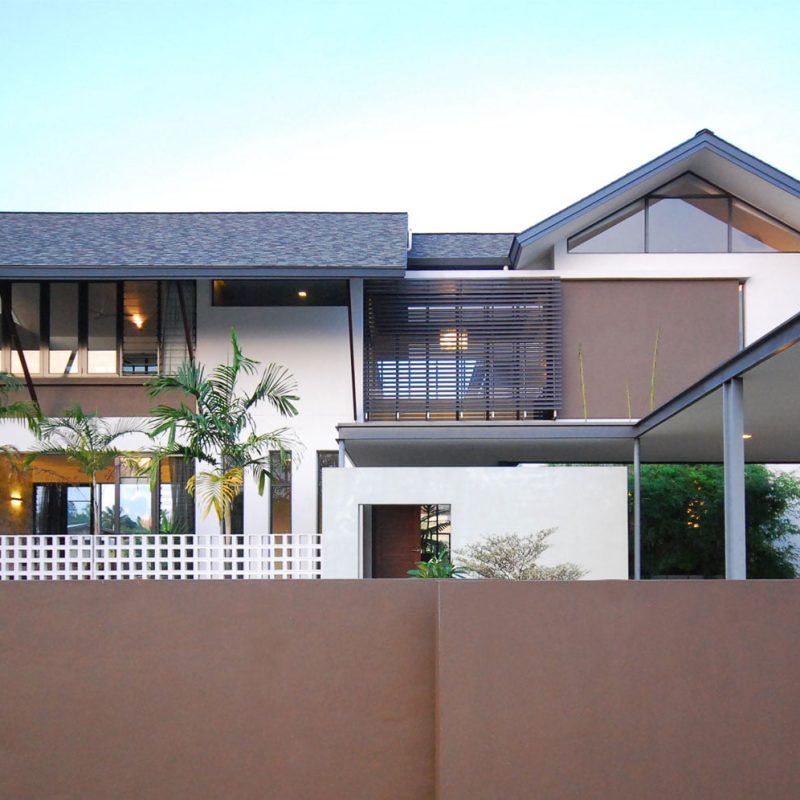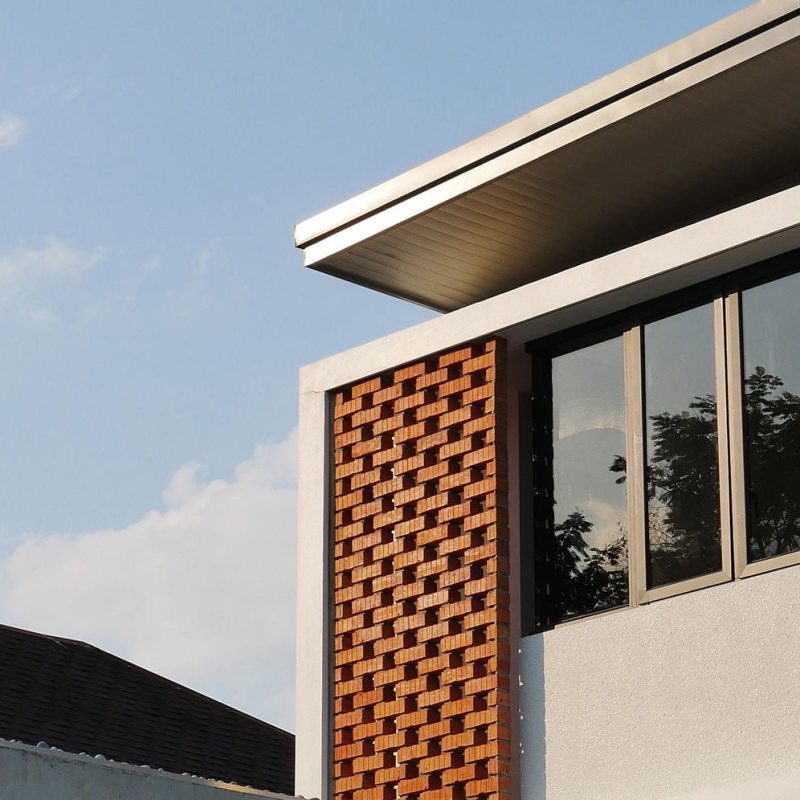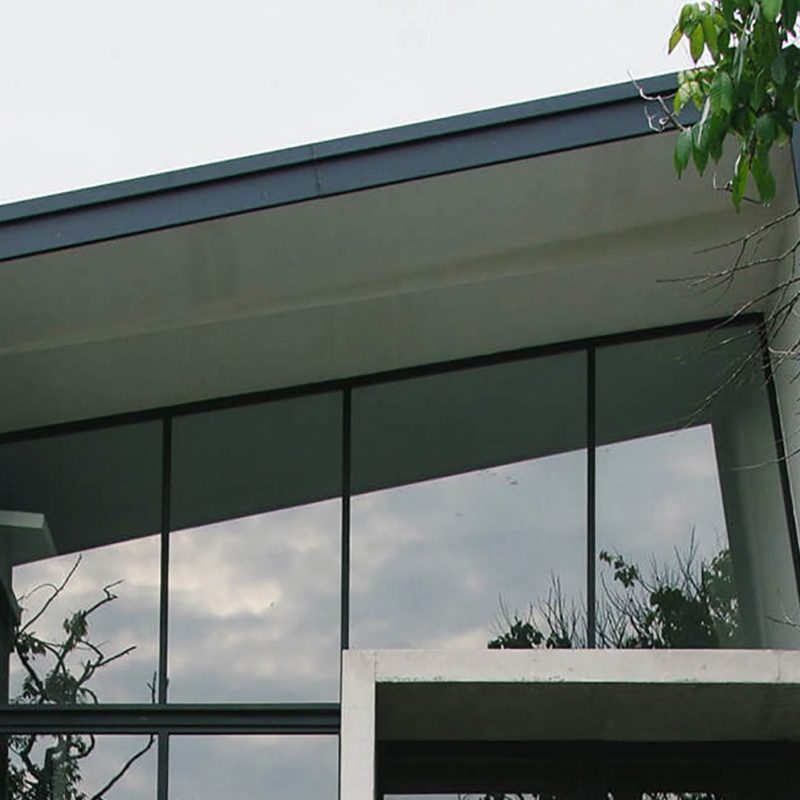Location
Malaysia
City
Kuching | Sarawak
Duration
- 2013 – 2018
Client
- Undisclosed
Surface
- Site area
- : 0.3 acre
- Building area
- : 246.58 m2
- Building height
- : 7.3 m | 2 storeys
Status
- Completed
Project Type
- Residential
Themes
- Single Residential
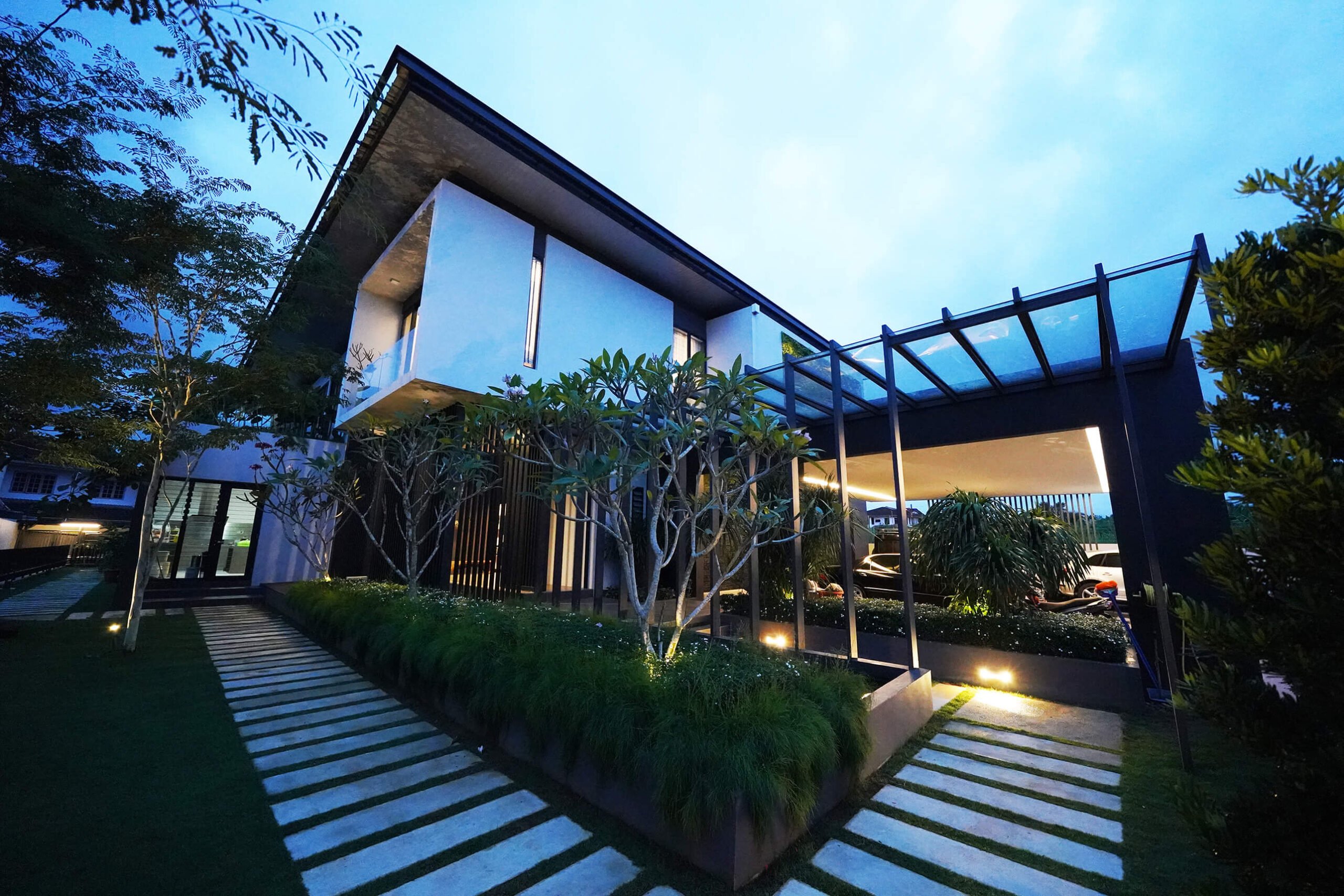
Song House is an urban bungalow located at the fringe of a housing area off Jalan Song, Kuching. The client is a couple in their fifties who shared their house with their elderly parents and siblings.
The brief was to have a modern tropical house which is naturally ventilated, naturally lit, open yet secure. Natural ventilation was a key requirement as the family avoided air-conditioning as much as possible.
The site lies at the end of a residential cul-de-sac with one side facing a large open land which we were immediately drawn to as a source for views, wind and relief from neighbours. The design intent for this house was to embrace the natural elements and to harness the sun and wind as part of the living experience.
This was achieved through the introduction of parallel north-west/south-east spines to organize and layer the living spaces. These spines are either punctured or pulled apart at various sections to harvest light and air. Attached to the spines at opposite ends are two light and wind funnels that continuously draw air into the spaces within.
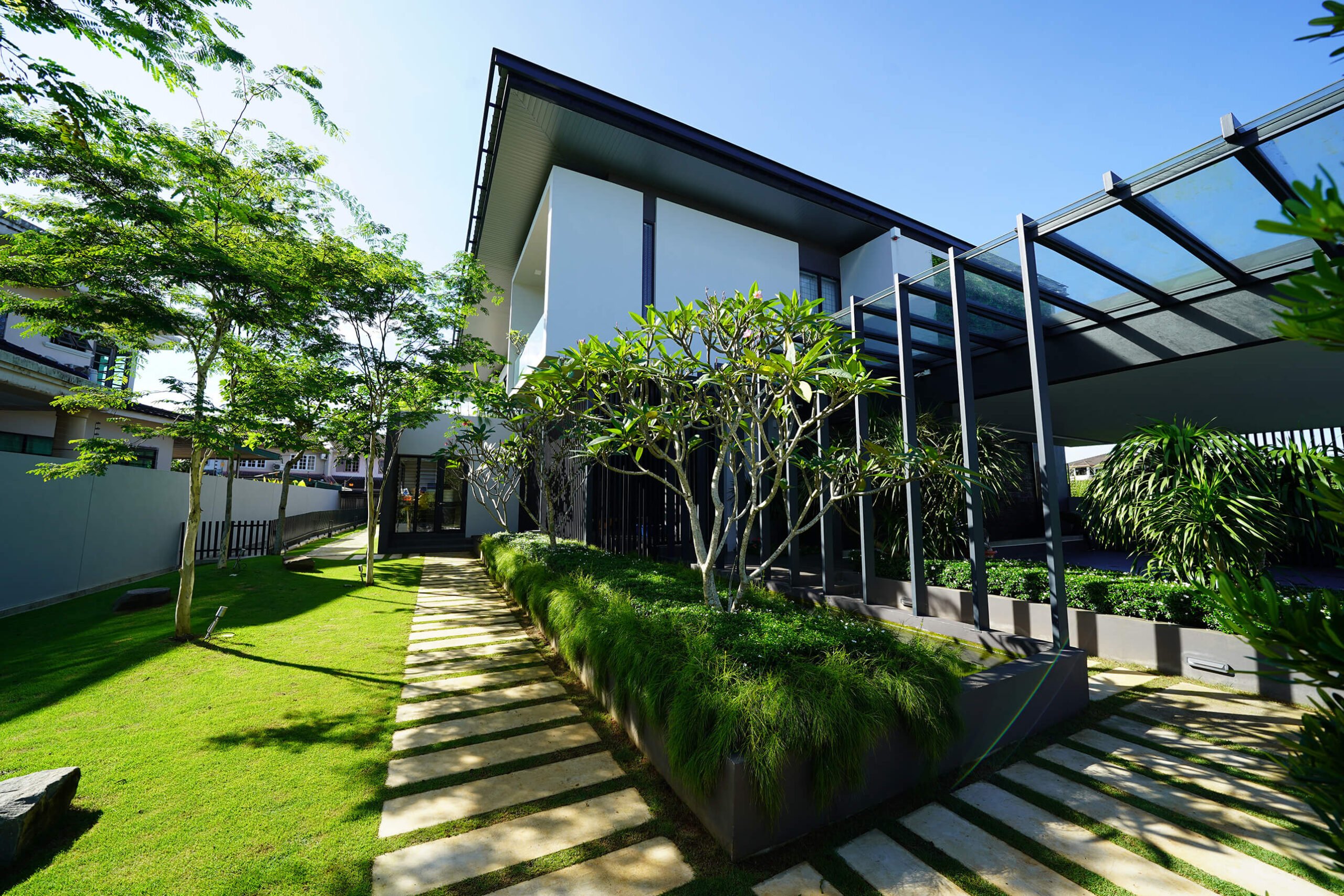
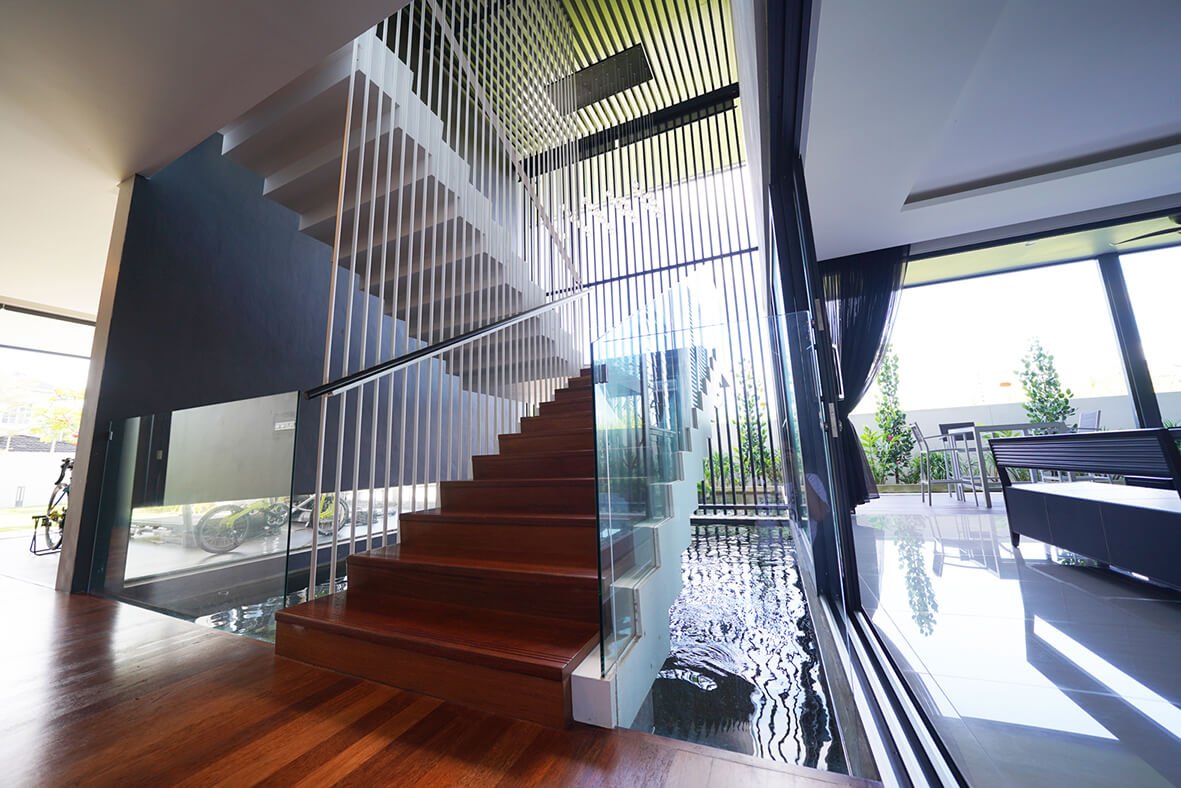
Planning-wise, the house is divided into three main parallel zones or cores. The service areas containing the wet-kitchen, maid’s room, washing and drying yards are concentrated on the Western side. This single-storey section shields the living spaces on ground floor and on the first floor serves as a roof garden that shelter the bedroom beyond.
Next to the service zone lies the intermediary spaces containing the entrance foyer, dry kitchen and relaxation area. A central circulation spine then slices through the house, divides and serves this and the Eastern main living core of the house, containing the living room, dining, gymnasium and home-office.
This spine is expressed as a feature wall within the house with an attached timber walkway running through the length of the building. It then continues to journey outwards only to end at the garden walls, extending the living experience outwards.
The main living core is sheltered by a band of transitional terraces with folding screens and cooling water bodies. Cooling water elements, terraces or courtyards are also placed around the house to serve their inner counterparts. The intent to harness as much natural light and ventilation as possible really set out how we approached the design and expressed the form.
The planes are firstly punctured or pulled apart at various sections to harvest light and air. To really draw in constant breezes into and around the house and to make the spaces breathe, two open wind funnels were inserted at opposing ends of the house.
One of the funnels takes the form of a double volume screened entrance foyer with a permeable floating balcony. The other, a floating staircase and stairwell open to the elements. Both funnels are also integrated with waterbodies to further cool down passing air and then screened to filter direct eastern or western sun-light and for security.
Light on the other hand, is drawn into the building through large windows and doors, forming most of the external skin. A roof with deep overhangs hovers over the whole house like a big umbrella, in some areas overhanging up to 8 m. On the upper floor, a sky-light lights up the central circulation spine that feeds the bedrooms and connects the two wind funnels.
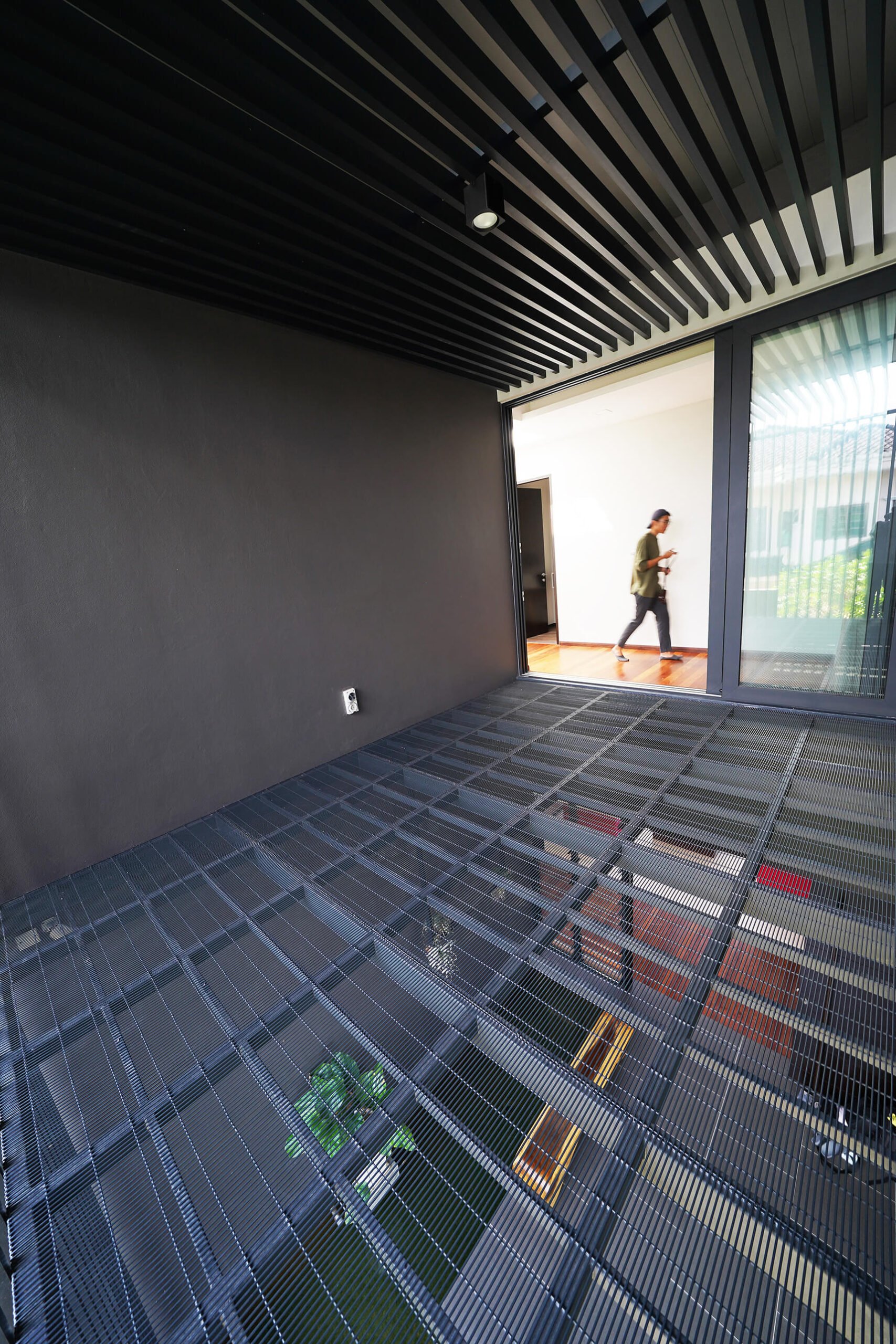
Team Credits
Architect
- SML Architects
Engineer
- C & S : Perunding J.L. Maju
Design Team
- Arlene Chew
- Bryan Thian
Publications
Share our project
